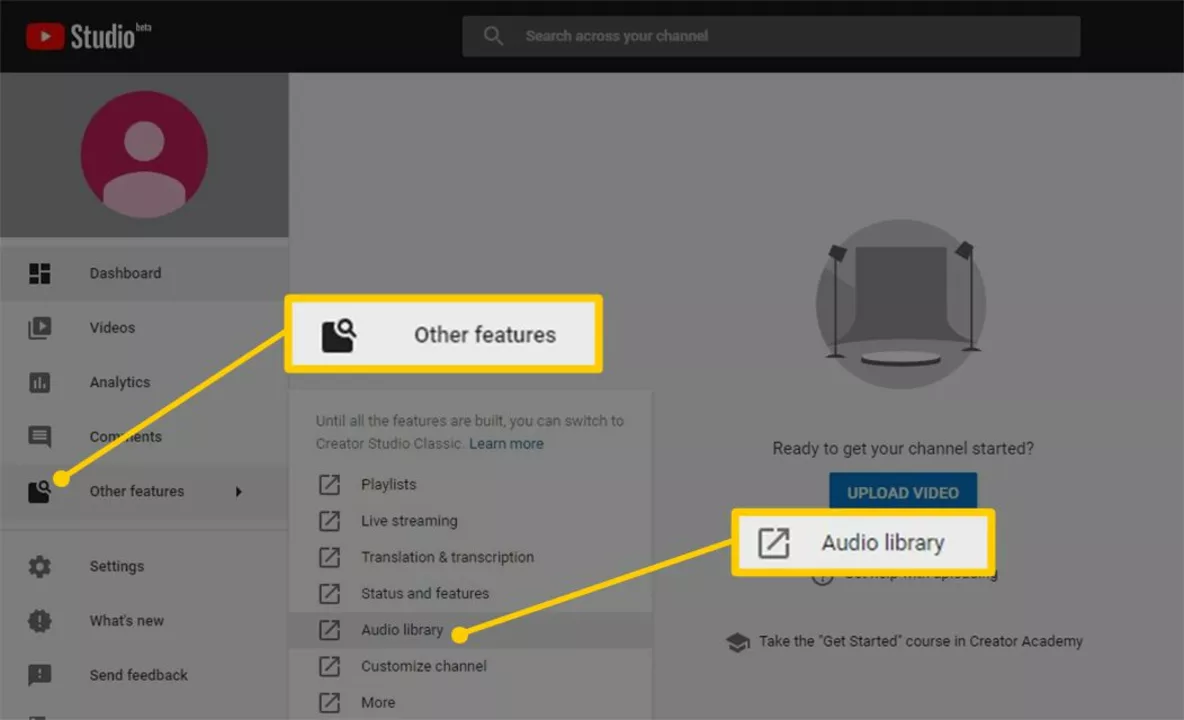Step-by-Step Guide to Uploading Copyright Music Videos on YouTube
Uploading copyright music videos on YouTube can be a tricky process. You need to be aware of copyright laws and regulations, as well as the YouTube terms and conditions. This guide will show you the steps to take when uploading copyright music videos on YouTube.
Step 1: Check copyright
The first step when uploading copyright music videos on YouTube is to check the copyright. Make sure that you have the right to use the content and that you have obtained the proper permissions. You can do this by visiting the artist's website and checking the copyright information or by checking the YouTube copyright policies.
Step 2: Prepare Video
Once you have checked the copyright, you need to prepare the video. This involves making sure it is in the correct format and size. YouTube recommends videos be in MP4 format with a maximum file size of 128GB. You should also make sure the video is correctly labeled with the artist's name and the title of the song.
Step 3: Upload Video
Once you have prepared the video, you are ready to upload it to YouTube. To do this, you will need to create a YouTube account if you don't already have one. Then you can click the upload button and follow the instructions to upload your video. Make sure to include the artist's name and the title of the song in the video description.
Step 4: Optimize Video
Once the video has been uploaded, it is time to optimize it for YouTube. This involves adding tags, descriptions, and thumbnails to the video. You should also include relevant keywords in the video title and description to make it easier for people to find your video.
Step 5: Monitor Video
The last step is to monitor the video. Make sure to check the analytics to monitor the performance of the video and to adjust the optimization if needed. Also, be aware of any copyright claims that may be made against your video.
How to Ensure You're Not Breaking the Law When Uploading Copyright Music Videos on YouTube
When uploading copyright music videos onto YouTube, copyright law must be taken into account. While YouTube is a platform for sharing content, it is also a platform for sharing content legally. Therefore, it is important to understand the rules of copyright and make sure that you are not breaking the law when uploading music videos.
The first step is to make sure that you are aware of the copyright law in your country or region. Copyright law varies from country to country, so it is important to do your research and make sure that you are familiar with the law in your area. It is also important to find out who owns the copyright of the music video you are planning to upload. Usually, the copyright is owned by the artist, the record label, or the music publisher.
The second step is to make sure that you have the necessary permissions from the copyright holder. It is important to contact the copyright holder and ask for their permission before uploading the music video. If you are granted permission, make sure that you keep a record of this permission as proof.
The third step is to make sure that you are not infringing on any other copyright laws. This means making sure that you are not using any of the music video's audio or video elements without the permission of the copyright holder. This also means that you cannot upload any covers or remixes of the music video without the copyright holder's permission.
The fourth step is to make sure that you include the necessary copyright information in the description of the video. This includes crediting the copyright holder, as well as including any other relevant copyright information such as a link to the copyright notice or copyright information page. This is an important step in making sure that you are not breaking any copyright laws.
Finally, it is important to make sure that you abide by YouTube's copyright policies. YouTube has a set of strict policies regarding copyright and it is important to make sure that you are not violating any of these policies. This includes making sure that your video does not contain any copyrighted content, as well as making sure that it does not contain any links to websites that contain copyrighted content.
By following these steps, you can ensure that you are not breaking the law when uploading copyright music videos on YouTube. It is important to remember that copyright law is a complex subject and it is important to do your research and make sure that you are familiar with the law in your area. Additionally, it is important to make sure that you have the necessary permissions from the copyright holder before uploading the music video.
How to Legally Share Copyright Music Videos on YouTube?
You may have noticed that some of your favorite music videos on YouTube are not available in your country. This can be very frustrating, especially if you want to share the music video with your friends or on social media. Fortunately, there is a way you can legally share copyright music videos on YouTube.
The first step is to get permission from the copyright holder of the music video. You can do this by contacting the record label or copyright holder directly and asking for permission to use the music video. If the copyright holder agrees, they will usually provide you with a link or code that you can use to upload the music video to YouTube.
Once you have the permission and the link or code, you can upload the music video to YouTube. You will need to create an account if you don't already have one, and then follow the instructions to upload the video. Make sure you include the link or code provided by the copyright holder in the description so that YouTube knows that you are legally sharing the music video.
Another way to legally share copyright music videos on YouTube is by using the official YouTube Audio Library. This library contains thousands of free music tracks and sound effects that you can use in your videos. When you use a song from the library, YouTube will automatically add the copyright info and the link or code to your video description, so you don't have to worry about getting permission from the copyright holder.
Finally, you can also use royalty-free music from websites like Pond5 or AudioJungle. These websites offer a wide selection of royalty-free music tracks that you can use in your videos. As with the YouTube Audio Library, you don't have to worry about getting permission from the copyright holder, as the websites have already secured the rights for you.
With these three methods, you can legally share copyright music videos on YouTube without any worries. Just remember to always get permission from the copyright holder before uploading, or use the YouTube Audio Library or royalty-free music websites.
How to Know What Types of Music Videos You Can Upload on YouTube?
If you are a musician, YouTube can be a great platform to share your music and videos with the world. But there are some restrictions and guidelines that you need to be aware of before you upload your music videos to YouTube.
The first thing to know is that you must have the copyright for any music you upload to YouTube. If you don’t own the copyright, you must get permission from the copyright owners before you can upload the video. YouTube also has some guidelines for the types of music you can upload. Music that is deemed too controversial, sexually explicit, violent, or offensive will not be allowed on YouTube.
YouTube also has some restrictions on the length of music videos. Videos that are too long will not be allowed on the platform. If you are creating a music video that is over 10 minutes long, it may be better to upload it to a different platform.
In addition to the copyright and content restrictions, YouTube also looks at the sound quality of the music. Music that is low quality or distorted will not be allowed on YouTube. You must make sure that the music you are uploading is of high quality before you can upload it.
Finally, YouTube also has some restrictions on the use of copyrighted music in your videos. YouTube will not allow you to use copyrighted music in your videos without permission from the copyright holder. If you are using copyrighted music in your videos, you must get permission from the copyright holder before you can upload the video.
By following these guidelines, you can ensure that your music videos can be uploaded to YouTube without any issues. Knowing the rules and regulations is the first step to creating successful music videos on YouTube.
Tips for Uploading Copyright Music Videos on YouTube Without Getting Flagged
If you're a musician who wants to upload music videos to YouTube, you need to be aware of copyright laws and how they affect you. It's important to know how to upload copyright music videos without getting flagged and potentially having the content removed. Here are some tips for uploading copyright music videos on YouTube without getting flagged.
Know the Law
The first step in avoiding getting your content flagged is to understand the law. Copyright law is complicated, but ultimately, it's your responsibility as a content creator to make sure you're not infringing on someone else's copyright. This means that you should be aware of what kinds of content you can legally use and what kind of content requires permission from the copyright holder.
Get Permission from Copyright Holders
If you are using other people's content in your music videos, you should get permission from the copyright holders. This includes music, images, videos, and any other copyrighted material. It's important to get this permission in writing, as it will protect you if you ever get flagged and your content is removed.
Use Creative Commons
Creative Commons is a great resource for content creators who are looking for copyright-free material they can use. Creative Commons allows content creators to use, remix, and share their work without fear of getting flagged or having their content removed. It also provides a great way for musicians to collaborate on projects without worrying about copyright infringement.
Be Careful with Remixes
If you're creating music videos that are based on remixes of existing songs, you should be extra careful. Remixes can be tricky, as they often contain elements of the original song. This means that you may need to get permission from both the original songwriter and the current copyright holder. If you're not sure whether or not you need permission, it's best to err on the side of caution and contact both parties before posting the video.
Cite Sources
When you're using other people's content in your music videos, it's important to cite your sources. This means that you should include the names of the copyright holders and the original sources for the material in your video descriptions. This will help you avoid getting flagged and it will also give credit where it's due.
Be Aware of YouTube's Guidelines
Finally, it's important to be aware of YouTube's guidelines for copyright infringement. YouTube has a zero-tolerance policy for copyright infringement and they will take down videos that violate their guidelines. Make sure you read and understand YouTube's guidelines and follow them to the letter. This will help you avoid getting your content flagged and removed.
By following these tips, you can ensure that your music videos are uploaded to YouTube without getting flagged. Remember to get permission from copyright holders, use Creative Commons material, be careful with remixes, cite your sources, and follow YouTube's guidelines. Doing so will help keep your content safe and protect you from copyright infringement.

